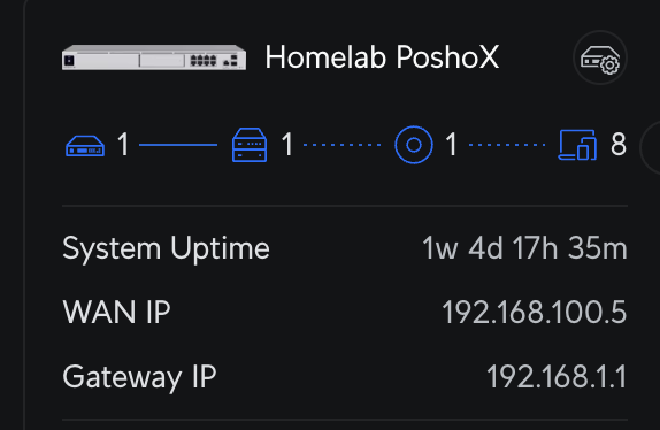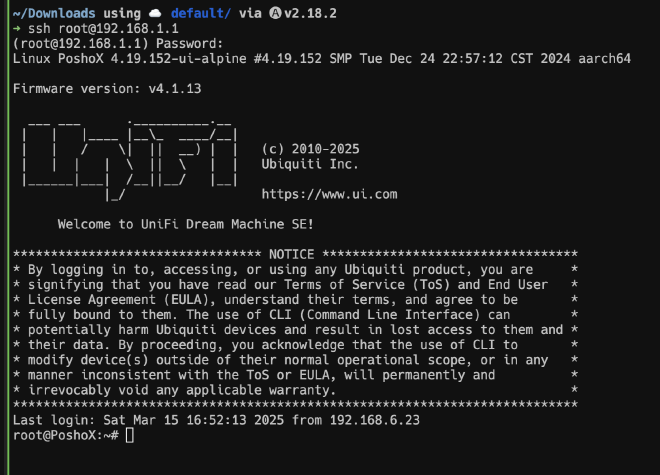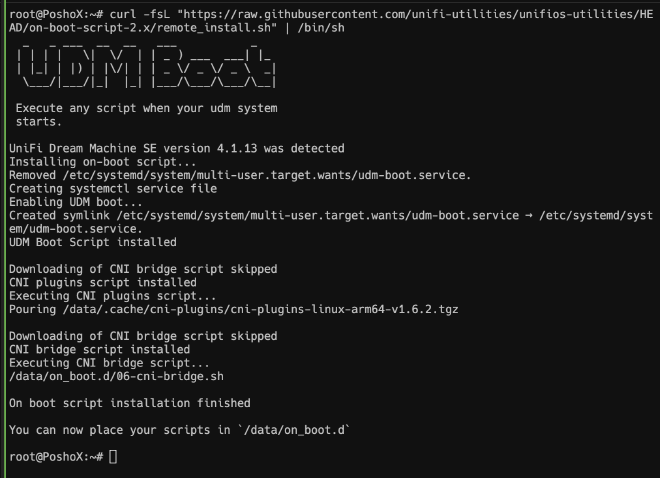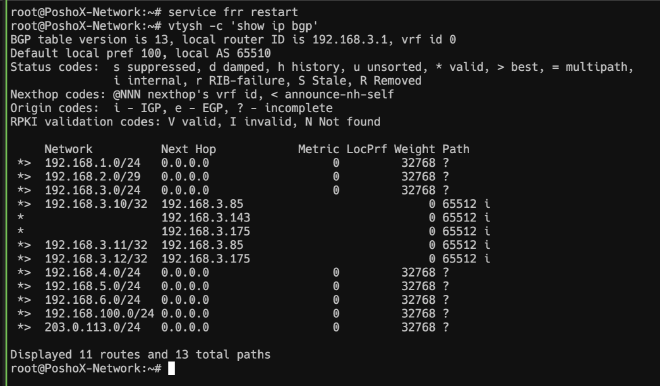Considerations#
Just to keep in mind, this homelab is running:
What’s the problem?#
In this series of events, it’s definitely time to talk about network segregation. For many people, this is not relevant and they prefer to leave everything on the network created by their Internet Service Provider (ISP), but in our case, we like to complicate things lol.
As a router at home, I have a Unifi Dream Machine Special Edition with 8 GbE ports, 6 of them with PoE and 2 with PoE+. On it, I have 4 networks called Secured, IoT, HomeLab, and Guest.

As we can deduce, the lab network is the one called HomeLab where my K3S and Proxmox cluster lives, but here’s the problem: everything works fine within that network and all devices can reach each other. Things change when I’m on the Secured network. With the correct firewall rules, I can reach the Kubernetes and Proxmox nodes, however, I cannot reach the applications exposed using either their Load Balancer service or their IngressRoute, which is part of Traefik. That’s the big problem: the routes to those IPs are not exposed outside the cluster.



How to solve it?#
To “publish” those IPs and their routes outside our VLAN, we will use a routing protocol. BGP (Border Gateway Protocol) is a standardized exterior gateway protocol designed to exchange routing information among autonomous systems (AS) on the Internet. It can be used in networks that include VLANs to improve network management and performance, which can be useful for properly segmenting the network and allowing or denying traffic between different VLANs using Layer 3 devices like routers or multilayer L3 switches.
In my case, the UDM SE runs on Unifi OS V4.x, and although it has native support from the GUI, I prefer to achieve it from the router console.
Turn on Router SSH#
By default, this is turned off, so we need to enable it before entering. To do this, we go to the Settings > Control Plane > Console section and enable the SSH checkbox. Once this is done, we click on “Change Password” to assign the password we will use to log in.

With that configured, and before proceeding, we note the gateway router’s IP, which we can see here.

Connect to UDM via SSH#
In the terminal, we run ssh root@192.168.1.1 (the IP must be the one we noted previously), enter the password, and we’ll be in.

Configure On-Boot Script#
As part of the unifios-utilities library, we have the On-Boot script, which, as its name suggests, is used to load configurations to the UDM when it undergoes a restart or even when a firmware update is performed.
To do this, in our terminal within the UDM, we will run curl -fsL "https://raw.githubusercontent.com/unifi-utilities/unifios-utilities/HEAD/on-boot-script-2.x/remote_install.sh" | /bin/sh. Once finished, we can proceed to install FRR.

Installing Free Range Routing#
Free Range Routing (FRR) is a suite of open-source Internet routing protocols for Linux and Unix platforms. FRR basically allows you to manage the network efficiently, connecting hosts, virtual machines, and containers to the network, announcing network services, and performing routing and switching on the LAN.
To do this, we will execute vi /data/on_boot.d/10-frr.sh and within the file, we will paste the following.
#!/bin/bash
# If FRR is not installed then install and configure it
if ! command -v /usr/lib/frr/frrinit.sh &> /dev/null; then
echo "FRR could not be found"
rm -f /etc/apt/sources.list.d/frr.list
# Add GPG key
curl -s [https://deb.frrouting.org/frr/keys.gpg](https://deb.frrouting.org/frr/keys.gpg) | sudo tee /usr/share/keyrings/frrouting.gpg > /dev/null
# Using latest stable version
FRRVER="frr-stable"
echo deb '[signed-by=/usr/share/keyrings/frrouting.gpg]' [https://deb.frrouting.org/frr](https://deb.frrouting.org/frr) \
$(lsb_release -s -c) $FRRVER | sudo tee -a /etc/apt/sources.list.d/frr.list
apt-get update && apt-get -y install frr frr-pythontools
if [ $? -eq 0 ]; then
echo "Installation successful, updating configuration"
echo > /etc/frr/vtysh.conf
rm -f /etc/frr/frr.conf
chown frr:frr /etc/frr/vtysh.conf
fi
service frr restart
fi
Once saved, we assign execution permissions with chmod 744 /data/on_boot.d/10-frr.sh and finally, we proceed to execute the script using /data/on_boot.d/10-frr.sh. When it finishes, we will be ready to configure.

When everything is ready, we need to activate the bgpd daemon.
Activating bgpd#
To activate the daemon that corresponds to bgpd, we will execute vi /etc/frr/daemons and in our editor, we will change the following value from bgpd=no to bgpd=yes. We save and proceed to the last part.
...
# The watchfrr, zebra and staticd daemons are always started.
#
bgpd=yes
ospfd=no
...
Configuring the routes#
As a final step, it only remains to configure and announce the routes using BGP. For this, we can use the following template, where we will make slight changes. The first is the password section, which, although in this particular case since all the configuration is within the UDM, it doesn’t hurt to have it. The second is the ASN (Autonomous System Number), which in this case is here router bgp 65510. We can change it, or leave it as it is. If you change it, just note it down for later use.
We also need to configure the VLAN Gateway IP, in my case bgp router-id 192.168.3.1. And finally, the neighbors, which are basically the “peers” we want to connect. In my case, they are 3 nodes that comprise the K3s cluster.
neighbor 192.168.3.85 peer-group ML
neighbor 192.168.3.143 peer-group ML
neighbor 192.168.3.175 peer-group ML
Here is the complete file with the mentioned modifications:
! -*- bgp -*-
!
hostname $UDMP_HOSTNAME
password xxxxxxxxx
frr defaults traditional
log file stdout
!
router bgp 65510
bgp ebgp-requires-policy
bgp router-id 192.168.3.1
maximum-paths 1
!
! Peer group for MetalLB
neighbor ML peer-group
neighbor ML remote-as 65512
neighbor ML activate
neighbor ML soft-reconfiguration inbound
neighbor ML timers 15 45
neighbor ML timers connect 15
! Neighbors for MetalLB
neighbor 192.168.3.85 peer-group ML
neighbor 192.168.3.143 peer-group ML
neighbor 192.168.3.175 peer-group ML
address-family ipv4 unicast
redistribute connected
!
neighbor DNS activate
neighbor DNS route-map ALLOW-ALL in
neighbor DNS route-map ALLOW-ALL out
neighbor DNS next-hop-self
!
neighbor ML activate
neighbor ML route-map ALLOW-ALL in
neighbor ML route-map ALLOW-ALL out
neighbor ML next-hop-self
exit-address-family
!
route-map ALLOW-ALL permit 10
!
line vty
!
After saving the changes, we proceed to restart the service using service frr restart and finally, to see the propagated routes, we execute vtysh -c 'show ip bgp', which will show us our VLANs, as well as the IPs of the nodes, and those of the Kubernetes services (in my case, 192.168.3.10 is the Traefik service, which acts as a reverse proxy).

How do we test?#
How about we try again the curl that was failing? We execute curl https://192.168.3.10 and what we can see is that it responds with a 404, which is perfect! Doing the same, but passing a host header so the ingress route of Traefik can respond, we see that as expected, we can reach it without a problem!

This is the end of our article, thank you very much for stopping by and I hope it has helped you!
